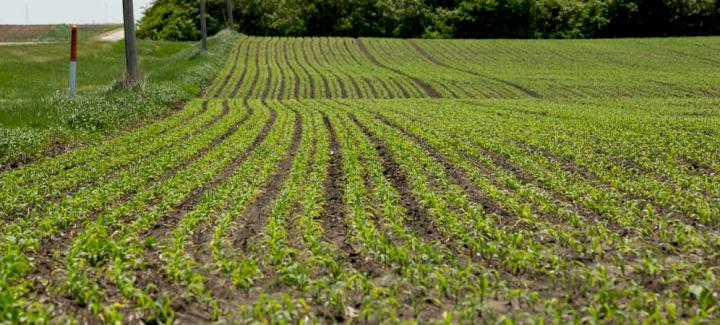
There’s no way around it. Early-season crop scouting is essential if growers want to get ahead of yield-robbing problems in their fields. Diseases, pests, weeds and compaction can all affect your acres, so getting into your fields early and often is imperative this spring and through the remainder of the growing season. Here are a few tips to help your early-season crop scouting.
- Do your research. Review your notes from years’ past. What problems were present, and could they potentially rear their heads this year? What hybrid/variety did you plant last year? Did your herbicide and fungicide program work? What were the soil fertility levels last fall? Familiarize yourself with the potential issues that could be present in your fields before you begin scouting. You can also check out university extension apps or online bulletins that outline the various diseases, pests and weeds that affect your area. For example, in soybeans you want to scout for soybean cyst nematodes, bean leaf beetles or signs of sudden death syndrome early in the season. For corn, you’ll want to look for insects such as cutworms and wireworms, or for any indication of Anthracnose leaf blight or damping off.
- Have the necessities ready to go. Bring your probe and sampling bags for soil samples, pack your research materials to help identify anticipated problems, use a handheld GPS or field maps/guides to chart your path through each field, bring a magnifying glass to ensure you can get a closer look at the seedling, roots and vegetation you’re scouting, and bring a notepad to take notes of problem areas. Save time by being prepared.
- Scout newly planted fields early, sometimes even before emergence. Even before crops surface, something could be lurking below ground. Insects such as wireworms or seed corn maggots or diseases such has Phytophthora and Phythium root rot can be problematic and noticeable (below ground) before emergence. Use your probe to check for compaction and pests or dig up a few seedlings to check for seedling diseases There’s nothing to lose by scouting early, but there could be a lot to lose if you don’t.
- Don’t just check the edges of the field. No field is the same, so you need to check various spots of every field and in different rows. Experts at Iowa State University Extension recommend scouting in either a transect, zig-zag or diamond pattern. Whichever pattern you use, we recommend using this same pattern throughout the rest of the growing season and continuing to monitor the same spots. Modern-day technology such as handheld GPS systems can ensure you chart and remember your path throughout the growing season. And other technology such as drones can give you the birds’ eye view of your fields, allowing you to take a closer look at plant stands and areas where runoff or compaction may have delayed emergence.
- Scout often. Crop scouting isn’t just a once-over job. Growers should start scouting after planting and scout weekly, if not twice a week, through harvest. Weeds are fast-growing and prolific and can emerge in a matter of days. Some plants produce hundreds to hundreds of thousands of seed in only a few weeks’ time from emergence. Scouting early and often increases your chances of catching weed escapes before they take over your fields, in addition to the burdensome pests and diseases that could be present in your fields.
For more tips on early-season crop scouting, contact your local Stine sales rep.
Related Articles
-

Start strong with Stine®: Maximizing your 2026 potential
January 2026 in Agronomy
-

Stine® to offer Syngenta’s Victrato® soybean seed treatment in 2026
December 2025 in Agronomy
-

Use Stine’s XP® seed treatments to prevent early injury to your crops
December 2025 in Agronomy
-

Understanding Stine’s enhanced oil profile soybeans
December 2025 in Agronomy



